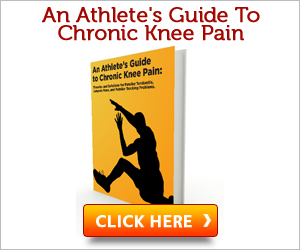Pain That Brings You to Your Knees
Have you ever imagined yourself not having knees? Surely, it is a delight to see those shapely, long legs, but without the knees, those legs will be useless. The knee is a weight-bearing joint that connects the thigh and the leg to each other.
The role of the knees is to allow movement of the legs by flexing (bending) and extending (straightening) to perform normal daily functions such as walking, sitting, standing, running, and even kicking. However, today’s active society and fast-paced lifestyle has resulted in the rising number of problems related to knee conditions.
When acute knee injuries and trauma occur, parts of the anatomy may be ruptured, such as the ligaments and cartilages which cause knee pain. Habitual or chronic overuse of the knees can cause inflammation, making the knees swell and painful.
Knee pain is no longer a rare case and has become a very common musculoskeletal complaint that brings people to pay a visit to their doctors. Some people may consider knee pain as a minor problem, but it can lead to serious discomfort and acute disability, especially if the damage is severe. Although most knee pains are caused by an injury, medical conditions such arthritis, gout, infections, and chondromalacia can also bring you to your knees.
Acute knee pain is described as severe pain that comes on suddenly and is usually the result of injury or infection. Some of the more common knee injuries and their signs and symptoms include the following:
Ligament Injuries – when the tough bands of tissue that connect the thighbone (femur) and the lower leg bone (tibia and fibula) together, also known as ligaments, are torn as a result of a fall or contact trauma, most likely it will cause instant pain in the injured area. Discomfort may range from mild to severe. Pain is heightened when you walk or bend your knee.
Tendon Injuries – tendons are thick, fibrous cords that attach muscles to the bone. Tendinitis is irritation and inflammation of one or more tendons and may involve one or both knees. Pain and swelling takes place at the front knee and below the knee cap. One will not be able to straighten the knee when tendons have been totally ruptured.
Meniscus Injuries – involves tears in the C-shaped cartilage that curves within your knee joint. It may hamper knee movement and cause your knee joint to lock so that you can’t extend it completely. When this happens, the knee must be surgically treated.
Loose Body – is when an injury or degeneration of bone or cartilage causes a piece of bone or cartilage to break off and float in the joint space. This may not create any problems unless the loose body interferes with knee joint movement — the effect is something like a pencil caught in a door hinge, leading to pain and a locked joint.
Dislocated Kneecap – involves the slipping of the triangular bone that covers the front of your knee (patella) out of place, usually to the outside of your knee. Dislocation is visible and your kneecap swings from side to side. There is intense pain and swelling in the affected area and difficulty walking or straightening your knee. Once a kneecap has been dislocated, there is greater risk of it happening again.
Osgood-Schlatter Disease – affects teens and preteens who are into active sports. This overuse syndrome causes pain, swelling and tenderness at the bony prominence (tibial tuberosity) just below the kneecap and frequently affects just one knee, but may develop in both knees.
Hyperextended Knee – is an injury in which the knee extends beyond its normally straightened position, such that it bends back on itself. Sometimes the damage is relatively minor, with pain and swelling when you try to extend your knee. But a hyperextended knee may also lead to a partial or complete ligament tear.
Septic Arthritis – is a condition when the knee joint becomes infected, leading to swelling, pain and redness. Septic arthritis often occurs with a fever.
Sometimes an injury can lead to chronic knee pain. Often, chronic pain results from a medical condition such as:
Rheumatoid Arthritis – this is considered to be the most debilitating of the more than 100 types of arthritis and can affect almost any joint in the body, including the knees. Aside from pain and swelling, aching and stiffness will be experienced when you get up in the morning or after periods of inactivity. It may lead to loss of motion in the knees and eventual deformity of the knee joints.
Osteoarthritis – is also known as degenerative arthritis and the most common type of arthritis. It’s a wear-and-tear condition that occurs when the cartilage in your knee deteriorates with use and age. It usually develops gradually and may cause varying degrees of pain and swelling when you stand or walk, especially before a change in the weather. It also can lead to stiffness, especially in the morning and after you’ve been active, and to a loss of flexibility in your knee joints.
Gout – is a form of arthritis characterized by redness, swelling and intense pain in the knee that comes on suddenly and without warning, usually at night time. The pain usually lasts five to 10 days and then stops. The discomfort subsides gradually over one to two weeks, leaving your knee joints apparently normal and pain-free.
There are some relatively minor instances of knee pain that respond well to self-care measures. However, more serious injuries, such as a ruptured ligament or tendon, may require surgical repair.
Moreover, not every knee problem can be prevented but one can take certain measures to reduce the risk of injury or disease. Good rehabilitation and focus on strength training of the muscles that control your kneecaps can greatly help in the prevention of dislocation as well as other injuries.



